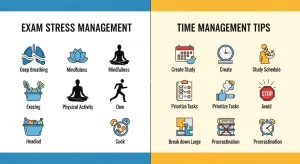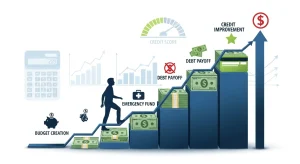In our fast-paced digital world, mastering time management techniques has become more crucial than ever. Whether you’re a busy professional, entrepreneur, or student, effective productivity tips can transform your daily routine from chaotic to controlled, helping you accomplish more while reducing stress and overwhelm.
Take back your time with time management. Use time management strategies to intentionally set your daily priorities and focus on the most relevant work. This comprehensive guide explores the most effective time management methods that successful people use to maximize their productivity and achieve their goals.
The Ultimate Guide to Home Entertainment Devices
Understanding the Science Behind Time Management
Why Traditional Time Management Fails
Many people struggle with time management because they focus on managing time itself rather than managing their energy, attention, and priorities. The most effective productivity methods recognize that time is finite, but how we use it can be optimized through strategic planning and proven techniques.
Key Principles of Effective Time Management:
- Focus on outcomes, not just activities
- Align tasks with natural energy cycles
- Eliminate decision fatigue through systems
- Build sustainable habits, not temporary fixes
- Balance productivity with well-being
The Complete Guide to Remote Work & Home Office Gear
The Pomodoro Technique: Master Focus Through Time Boxing
How the Pomodoro Technique Works
It uses a kitchen timer to break work into intervals, typically 25 minutes in length, separated by short breaks. Each interval is known as a pomodoro, from the Italian word for tomato, after the tomato-shaped kitchen timer that Cirillo used while he was a university student.
The Pomodoro Process:
- Choose a Task: Select one specific task to focus on
- Set Timer: Work for 25 minutes with complete focus
- Take Break: 5-minute break after each pomodoro
- Repeat Cycle: Complete 4 pomodoros, then take a longer break (15-30 minutes)
- Track Progress: Mark completed pomodoros to build momentum
Benefits of the Pomodoro Technique
Over two million people have already used the Pomodoro® Technique to transform their lives, making them more productive, more focused and even smarter.
Why It Works:
- Reduces Procrastination: 25 minutes feels manageable for any task
- Improves Focus: Creates urgency and eliminates distractions
- Prevents Burnout: Regular breaks maintain mental freshness
- Builds Awareness: Helps you understand how long tasks actually take
- Creates Momentum: Small wins compound throughout the day
The Ultimate Guide to Eco-Friendly Tech: Solar Chargers & Energy Monitors
Time Blocking: Strategic Calendar Management
Implementing Effective Time Blocking
Time blocking is a scheduling format that helps boost productivity by dividing your day into specific blocks of time. Using this approach, each block represents the time dedicated to completing a specific task or group of tasks.
Time Blocking Strategies:
1. Theme-Based Blocking
- Mondays: Strategic planning and goal setting
- Tuesdays-Thursdays: Deep work and project focus
- Fridays: Communication, meetings, and week review
2. Energy-Based Scheduling
- High Energy Periods: Tackle complex, creative tasks
- Medium Energy: Administrative tasks and emails
- Low Energy: Routine tasks and planning
3. Buffer Time Integration
- Travel Buffers: 15-30 minutes between meetings
- Task Buffers: Extra time for unexpected delays
- Daily Buffers: Unscheduled time for urgent matters
Advanced Time Blocking Techniques
Use time blocking: Setting Pomodoros as events in your calendar – visible to others – gently warns the world, “I’m busy now, catch you later,” and helps protect your focus windows from random meeting requests.
Pro Time Blocking Tips:
- Color-code different types of activities
- Schedule time for breaks and personal care
- Block recurring tasks weekly or monthly
- Include travel time and preparation time
- Review and adjust blocks based on actual time spent
Wearable Gadgets 2025: Smart Rings & Glasses Revolution
Priority Matrix: The Eisenhower Method
Understanding Task Priority Levels
Effective task prioritization involves categorizing activities based on urgency and importance:
| Priority Level | Description | Action Required |
|---|---|---|
| Quadrant 1 | Urgent & Important | Do immediately |
| Quadrant 2 | Important, Not Urgent | Schedule and focus |
| Quadrant 3 | Urgent, Not Important | Delegate if possible |
| Quadrant 4 | Neither Urgent nor Important | Eliminate or minimize |
Implementing the Priority Matrix
Daily Priority Assessment:
- List all tasks for the day or week
- Categorize each task into the appropriate quadrant
- Focus 70% of time on Quadrant 2 activities
- Minimize time spent in Quadrants 3 and 4
- Handle Quadrant 1 emergencies efficiently
AR/VR Headsets 2025: Ultimate Guide to Virtual Experiences
Getting Things Done (GTD): Complete Task Management System
The Five Pillars of GTD
David Allen’s productivity method provides a comprehensive system for managing all aspects of work and life:
1. Capture Everything
- Use a trusted system to collect all tasks, ideas, and commitments
- Empty your mind onto paper or digital tools
- Review capture tools regularly
2. Clarify and Process
- Determine what each item means and requires
- Apply the two-minute rule: if it takes less than two minutes, do it now
- Define clear next actions for complex projects
3. Organize by Context
- Group similar tasks together (@calls, @computer, @errands)
- Create project folders for multi-step outcomes
- Maintain reference materials separately from action items
4. Review Regularly
- Weekly reviews to update and maintain system
- Daily reviews to choose priority actions
- Monthly reviews for bigger picture planning
5. Engage with Confidence
- Trust your system to make action decisions
- Focus on current tasks without mental clutter
- Adapt system based on what works best for you
Smart Home Essentials 2025: Complete Guide to Hubs, Sensors & Matter
Digital Tools for Time Management Success
Essential Productivity Apps
Task Management:
- Todoist: Natural language processing and project templates
- Asana: Team collaboration and project tracking
- Things 3: Beautiful, intuitive task organization (Mac/iOS)
Time Tracking:
- RescueTime: Automatic time tracking and analysis
- Toggl: Manual time tracking with detailed reports
- Clockify: Free team time tracking solution
Focus Applications:
- Forest: Gamified focus sessions with virtual tree planting
- Cold Turkey: Website and application blocking
- Freedom: Cross-platform distraction blocking
Creating Your Digital Productivity Stack
Integration Strategies:
- Calendar Integration: Sync tasks with time blocks
- Cross-Platform Access: Ensure tools work on all devices
- Automation: Use Zapier or similar tools for workflow automation
- Regular Reviews: Weekly assessment of tool effectiveness
Investing for Beginners: Your Complete Guide to Start Building Wealth in 2025
Overcoming Common Time Management Challenges
Dealing with Interruptions and Distractions
Interruption Management Techniques:
- Communication Boundaries: Set specific hours for availability
- Batch Processing: Group similar interruptions together
- Quick Capture: Note interruptions for later processing
- Graceful Deflection: “I’m focused until 3 PM, can we talk then?”
Managing Perfectionism and Overwhelm
Strategies for Balance:
- Good Enough Standard: Define “done” before starting
- Time Limits: Set maximum time for tasks
- Progress Over Perfection: Focus on consistent forward movement
- Regular Breaks: Prevent decision fatigue and burnout
Building Sustainable Habits
Habit Formation Framework:
- Start Small: Begin with 2-minute versions of desired habits
- Stack Habits: Attach new habits to existing routines
- Environment Design: Make good choices easier
- Track Progress: Use visual cues to maintain motivation
- Celebrate Wins: Acknowledge progress to reinforce habits
Mushroom & Adaptogen Skincare: The Ultimate Guide to Fungi-Powered Beauty
Advanced Time Management Strategies
Energy Management Over Time Management
Optimizing Natural Rhythms:
- Chronotype Awareness: Work with your natural energy patterns
- Ultradian Rhythms: Take breaks every 90-120 minutes
- Energy Audit: Track when you feel most alert and focused
- Recovery Planning: Schedule downtime and restoration activities
Batch Processing and Theme Days
Efficiency Through Grouping:
- Email Batching: Check and respond at specific times
- Meeting Days: Consolidate meetings to preserve deep work days
- Content Creation: Batch similar creative tasks
- Administrative Tasks: Handle paperwork in dedicated blocks
Copper Peptides and Collagen Boosters: Your Ultimate Anti-Aging Guide
Frequently Asked Questions
1. What are the most effective time management techniques for beginners?
For newcomers to time management, start with these foundational productivity tips: implement the Pomodoro Technique for focused work sessions, use a simple priority matrix to identify important tasks, and practice time blocking by scheduling your most important activities first. These time management methods provide immediate structure without overwhelming complexity.
2. How do I choose the right productivity method for my work style?
The best productivity methods align with your natural preferences and work demands. If you struggle with focus, try the Pomodoro Technique. For managing multiple projects, consider the Getting Things Done system. If you prefer visual organization, time blocking on a calendar might work best. Experiment with different time management techniques for 2-3 weeks each to find your optimal approach.
3. Can time management techniques really reduce stress and improve work-life balance?
Yes, effective time management techniques significantly reduce stress by providing structure, clarity, and control over your schedule. By using productivity tips like proper task prioritization and energy management, you can complete work more efficiently, leaving time for personal activities. The key is choosing time management methods that create boundaries and help you focus on what truly matters.
K-Beauty Favourites: Snail Mucin and Sheet Masks Guide
Transform Your Productivity Starting Today
Mastering time management techniques isn’t about perfection—it’s about progress. Start by choosing one productivity method that resonates with your current challenges and implement it consistently for at least two weeks.
Remember, the best time management system is the one you’ll actually use. Whether you prefer the structured intervals of the Pomodoro Technique, the strategic planning of time blocking, or the comprehensive approach of Getting Things Done, consistency beats complexity every time.
Ready to revolutionize your productivity? Get access to premium productivity tools and templates that successful professionals use to master their time –
Time-tracking apps (RescueTime) :
Begin your transformation today by implementing just one technique from this guide. Your future self will thank you for taking control of your time and creating the productive, balanced life you deserve.











